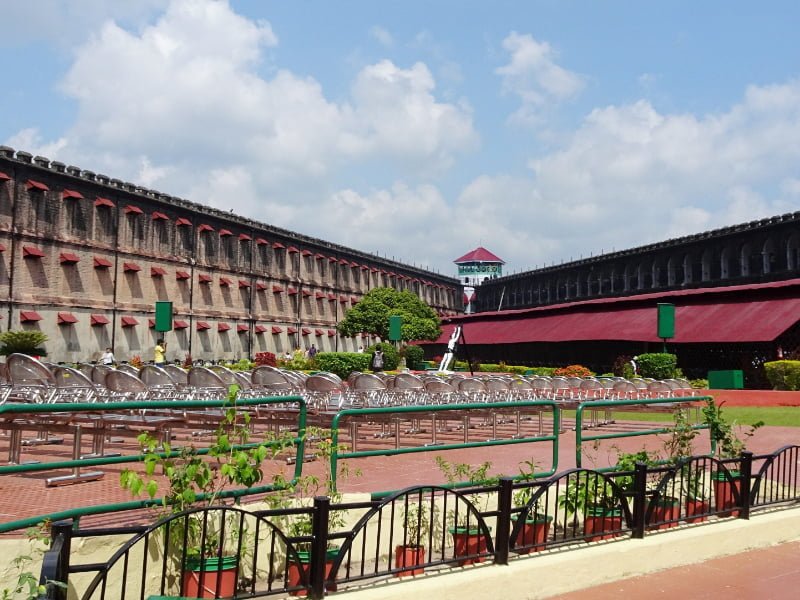
Cellular Jail:
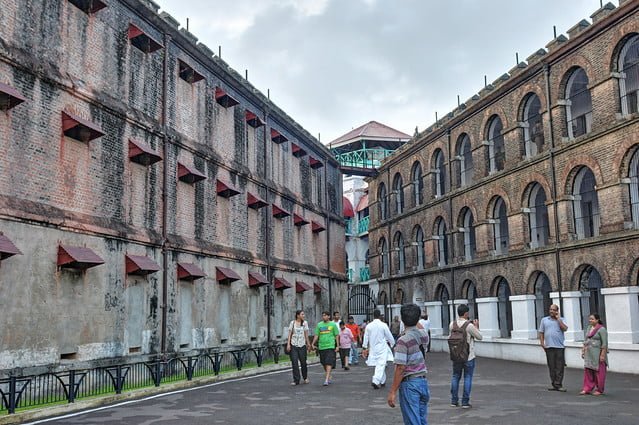
Cellular Jail: Nestled amidst the azure beauty of the Andaman and Nicobar Islands, the Cellular Jail stands as an enduring symbol of India’s freedom struggle. Also known as Kalapani Jail or Andaman Jail, it remains an essential part of India’s history, reminding us of the hardships faced by our freedom fighters during the oppressive British rule. Constructed in 1896, it took a decade and Rs 5,17,352 to complete the construction. The bricks for this infamous prison were brought from Burma, now known as Myanmar.
However, the history of using the Andaman Islands as a prisoner’s colony dates back to the Indian Rebellion of 1857. Lt. Archibald Blair first surveyed the islands in 1688. After the First War of Independence in 1857, the British sent freedom fighters to serve as laborers for constructing the jail and other buildings on Ross Island, which acted as the administrative headquarters for British Officers.
Reaching Cellular Jail:
Located just 2 km away from the main Aberdeen Bazaar and 6 km from the airport, Cellular Jail is conveniently accessible for tourists visiting the Andaman and Nicobar Islands.
Exploring Cellular Jail: Unraveling History’s Pages
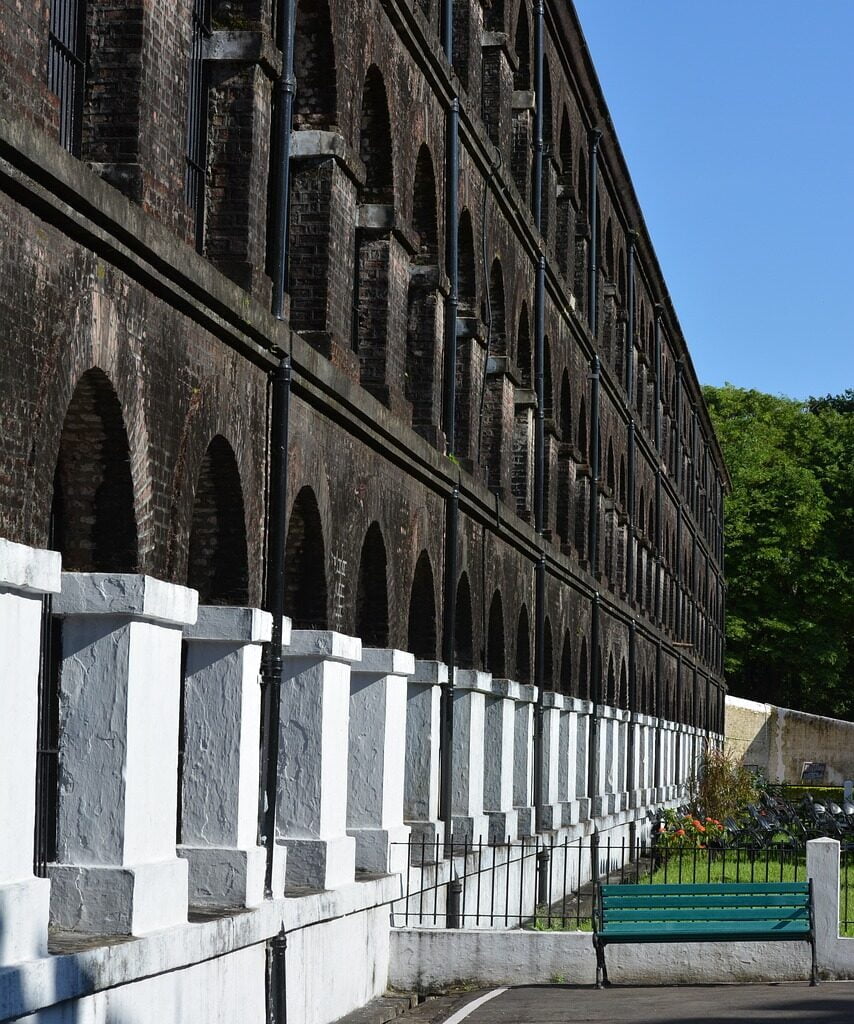
The Cellular Jail, also known as Kalapani Jail, holds a poignant history, beginning on March 10, 1858, when James Peterson Walker, the Superintendent of the Penal Settlement, arrived with the first batch of 200 chained prisoners. The number of prisoners increased to 773 within three months.
Architecturally, the jail stands out with its unique design inspired by the Panopticon model. It consists of three floors with seven wings radiating like spokes from a central tower. Each wing contains 99 cells, each measuring 13.5 feet by 7 feet, equipped with iron bar doors and small ventilators for light and air.
The inmates of Cellular Jail faced unimaginable hardships and cruel treatment, making it one of the most feared and formidable colonial prisons. Many prominent freedom fighters, including Veer Savarkar, Batukeshwar Dutt, and Mahavir Singh, were incarcerated here.
Veer Savarkar, affectionately known as Veer, arrived at Cellular Jail on July 4, 1911, sentenced to two consecutive life imprisonments. Surprisingly, he discovered that his elder brother, Ganesh Savarkar, was already imprisoned there, but the brothers remained unaware of each other’s presence for over a year.
The Jailor David Barrie, an Irishman, was infamous for his cruelty and ruled over the inmates from 1905 to 1919. His reign was marked by ruthless treatment, and he unabashedly proclaimed, “Because there’s the sea on all sides for a thousand miles, and on the Island, David Barrie is your God.”
Japanese Rule and Netaji Subhash Chandra Bose:

During the Second World War, the Japanese army invaded and occupied the Andaman Islands. Netaji Subhash Chandra Bose hoisted the Indian Flag in Port Blair, and all political prisoners were released while the British officers were imprisoned in Cellular Jail. However, after the defeat of the Japanese forces, the British recaptured the Andaman Islands in 1945.
Cellular Jail Today: A National Memorial
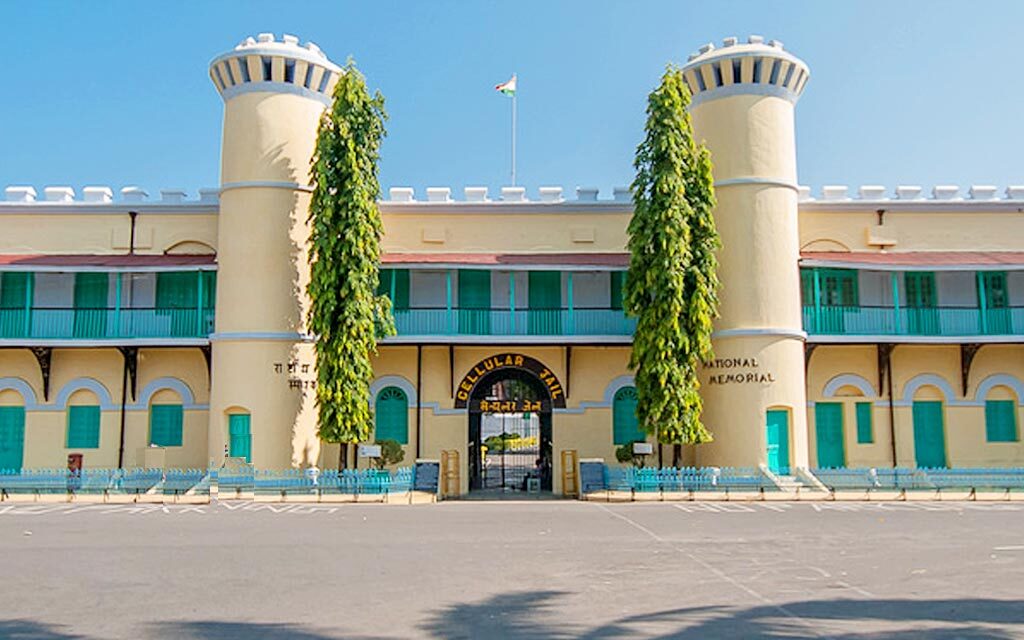
Post-independence, Cellular Jail was declared a National Memorial, transforming it into a significant tourist attraction. The jail complex now houses a museum that exhibits artifacts and memorabilia from the freedom struggle. It provides visitors with an opportunity to learn about the hardships faced by the prisoners and the sacrifices made by the brave souls who fought for India’s independence.
The Light and Sound Show:
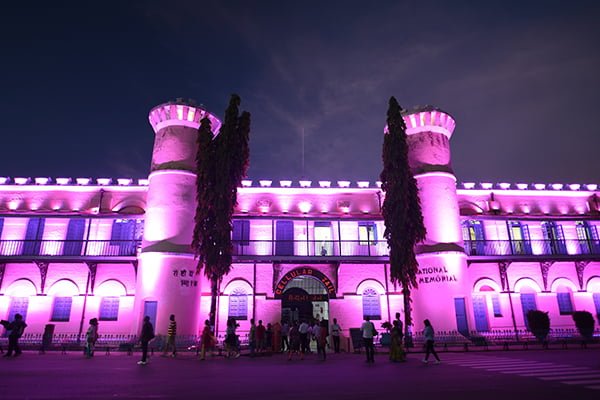
The Light and Sound Show at Cellular Jail is a captivating theatrical representation of the life of freedom fighters during their incarceration. The show skillfully portrays the struggles, hardships, and sacrifices endured by the prisoners, leaving a lasting impression on every visitor. Available in both Hindi and English, the show is a must-see for tourists seeking to delve deeper into India’s history.
Cellular Jail Museum:
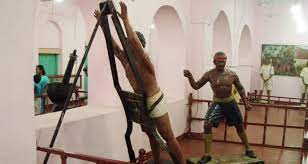
The museum attached to the jail complex offers detailed insights into the lives of the inmates, their living conditions, and the dress, utensils, and instruments used by them. It also features a comprehensive list of notable freedom fighters who were imprisoned in Cellular Jail.
Tips for Travelers Visiting Cellular Jail:
- Visit the Museum: Don’t miss the museum, which houses a treasure trove of historical artifacts and stories about the prisoners.
- Attend the Light and Sound Show: Witness the mesmerizing Light and Sound Show that narrates the heroic struggles of the freedom fighters.
- Pre-Book Show Tickets: The Light and Sound Show tickets can be limited, so it’s advisable to pre-book them through your travel agent.
Conclusion:
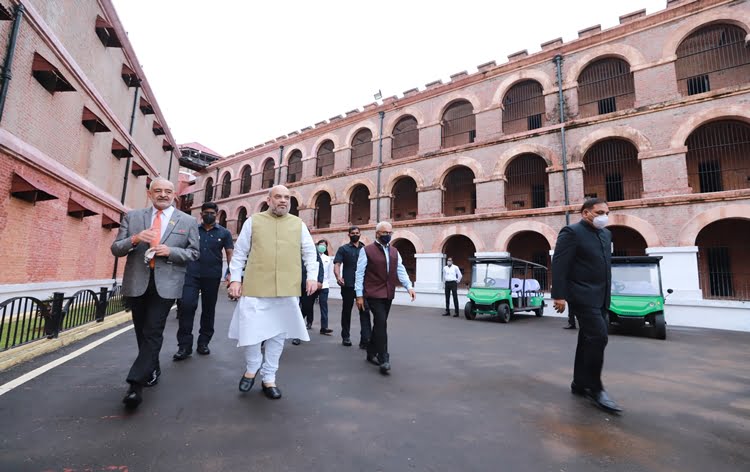
Cellular Jail, standing as a witness to the indomitable spirit of India’s freedom fighters, holds a significant place in the country’s history. Visiting this iconic monument offers a glimpse into the hardships faced by those who fought for India’s independence.
The Light and Sound Show further enrich the experience, leaving visitors inspired by the sacrifices made by our brave ancestors. A visit to Cellular Jail is a must for all travelers to Andaman and Nicobar Islands, as it provides an opportunity to pay homage to the unsung heroes of our freedom struggle and feel a profound sense of pride in being a part of an independent India. Embrace the history, honor the sacrifices, and cherish the resilience of our freedom fighters at the Cellular Jail in the enchanting Andaman and Nicobar Islands.


